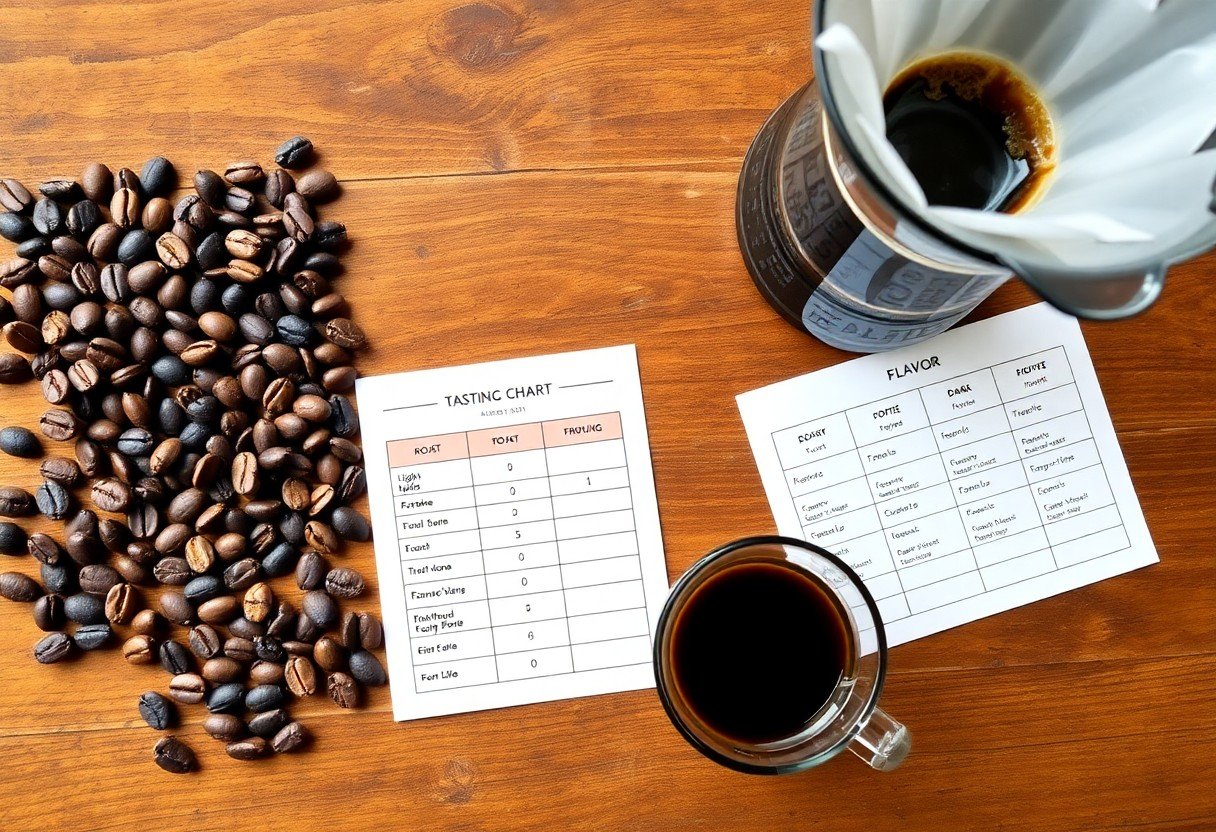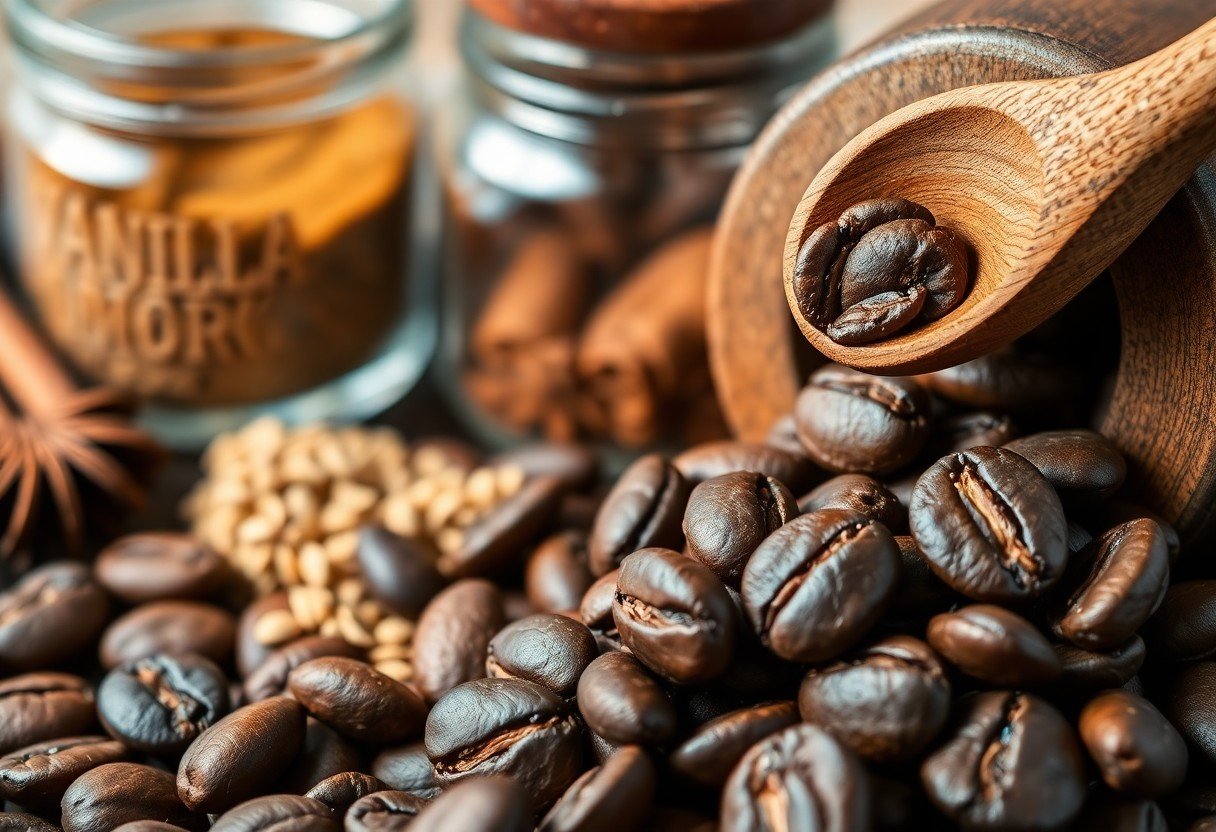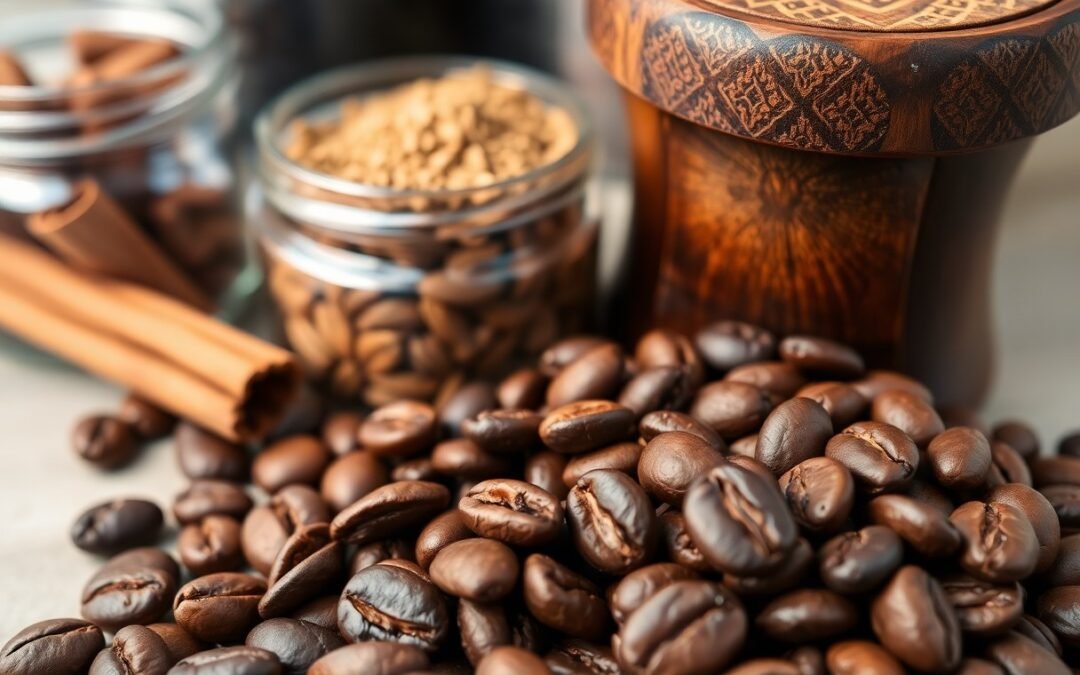Coffee enthusiasts like you often seek to understand what makes an artisan coffee taste exceptional. Delving into the science behind flavor profiles reveals the intricate factors—from bean origin and processing methods to roasting techniques and brewing styles—that influence your cup. This post will guide you through the fascinating elements that shape your coffee experience, enabling you to appreciate the rich complexities in every sip.
The Alchemy of Bean Selection
The selection of coffee beans is akin to an art form, where every choice contributes to the final brew’s complexity and character. Expert roasters and brewers meticulously evaluate factors such as growing altitude, processing methods, and harvest times, all of which influence the beans’ intrinsic qualities. Your appreciation for these nuances will elevate your coffee experience, guiding you toward the perfect cup that resonates with your individual taste preferences.
The Influence of Coffee Origin
Varietals and Their Flavor Differences

Roast Profiles: More Than Just Dark or Light
Roast profiles encompass a spectrum that goes beyond the simplistic classification of dark or light. Each roast level—light, medium, and dark—unfolds a unique set of flavors owing to the complex chemical transformations that occur during roasting. You’ll discover that subtle differences in temperature and time can yield remarkably distinct taste experiences, highlighting flavors from fruity and floral to nutty and chocolatey.
The Chemistry of Roasting and Its Effects on Flavor
The roasting process initiates a series of chemical reactions, such as Maillard reactions and caramelization, which develop the coffee’s flavor compounds. As you roast, heat causes the beans to expand and the sugars within them to break down, producing various acids and oils that contribute to the overall taste profile. Your choice of roast influences not just the richness but also the aroma, with lighter roasts often retaining more of the bean’s original characteristics.
The Role of Roast Degree in Flavor Development
Your selected roast degree directly affects flavor development, with each stage unlocking different taste notes. Lighter roasts preserve the bean’s inherent fruity and acidic qualities, while medium roasts bring balance through sweetness and body. Dark roasts deepen flavors, often resulting in a bold, rich cup but may sacrifice some of those delicate, nuanced notes found in lighter options.
Delving deeper into roast degree reveals that each level offers unique characteristics. For instance, a light roast might shine with vibrant citric acidity and floral notes, while a medium roast introduces a sweet caramel undertone, providing a fuller body. Dark roasting tends to emphasize bitterness and smokiness, often at the expense of the coffee’s original flavor complexity. Thus, experimenting with different roast degrees allows you to discover a spectrum of flavor possibilities, enhancing your appreciation for artisan coffee.
Brewing Techniques: Crafting the Perfect Extraction
Brewing techniques significantly influence your coffee’s flavor profile, transforming raw beans into a sensory experience. Methods like pour-over, French press, and espresso each offer unique extraction dynamics, shaping the balance of acidity, sweetness, and body. Tailoring your approach to specific beans can unlock their full potential, allowing you to explore the depths of flavor hidden within each cup.
The Science of Water Temperature and Coffee Grind
Your water temperature and coffee grind size play pivotal roles in extraction. Optimal temperatures range between 195°F to 205°F, where hotter water extracts oils and acids more efficiently. A coarser grind suits longer brewing times, while finer grinds extract flavors swiftly. Using the right combination ensures a balanced cup that highlights the unique notes of your chosen beans.
Extraction Factors
| Water Temperature | Optimal: 195°F – 205°F for best flavor extraction |
| Coffee Grind Size | Coarse for immersion methods, fine for espresso |
Brewing Methods and Their Unique Flavor Contributions
Each brewing method contributes distinct flavors and aromas, reflecting the techniques employed. The espresso method delivers a concentrated shot, highlighting oils and sugars, while the French press allows full immersion, resulting in a fuller body and a more robust flavor. Pour-over techniques bring out floral and fruity notes, emphasizing clarity and depth. Understanding these variations helps you choose the best method for your desired flavor profile.
For instance, espresso brewing extracts intense, bold flavors due to high pressure, enhancing sweetness and crema. On the other hand, methods like Chemex and Aeropress prioritize clarity and cleanliness in flavor, allowing nuanced tasting notes to shine through. The brewing time also matters: prolonged contact with water can lead to over-extraction, dulling brightness, while too quick can result in sourness. Experimenting with these methods enables you to discover your favorite flavor nuances within the coffee spectrum.
The Role of Freshness and Storage
Freshness and effective storage are vital components that significantly influence your coffee’s flavor profile. Coffee beans begin to lose their optimal flavor within days after roasting; thus, ensuring they remain fresh involves not just the timing of consumption but also how you store them. Exposure to air, light, and moisture can accelerate degradation, affecting both aroma and taste.
How Aging Affects Flavor Quality
Aging coffee beans can lead to a flattened flavor profile, diminishing the vibrant notes that originally defined them. As beans age, they oxidize and may develop off-flavors, making your once-bright brew dull and lifeless. This transition highlights the importance of fresh roasts in elevating your coffee experience.
Best Practices for Storing Coffee
For optimal storage, keep coffee beans in an airtight container, away from direct sunlight, heat, and moisture. A cool, dark pantry is ideal, as fluctuations in temperature can further accelerate flavor loss. If you buy in bulk, consider freezing portions in airtight bags to maintain freshness, ensuring you only defrost what you’ll brew.
Proper storage techniques can make a noticeable difference in your coffee’s taste. Using opaque, airtight containers helps shield beans from light and air, which are primary culprits in flavor degradation. For the best results, consider investing in vacuum-sealed containers or bags specifically designed for coffee storage. If freezing, always place beans in a freezer-safe, airtight bag and avoid repeated thawing, as condensation can ruin the beans. By following these practices, you maintain the freshness and complexity of your coffee, allowing for a consistently enjoyable cup with every brew.

Sensory Analysis: Understanding Flavor Notes and Aroma
Sensory analysis explores into the intricate interactions between aroma, flavor, and your palate when enjoying artisan coffee. By engaging your senses—taste, smell, and even sight—you can appreciate the various flavor notes that each brew offers. Factors such as the coffee’s origin, processing methods, and roast profile converge to create a unique sensory experience, allowing you to detect subtle fruitiness, nuttiness, or floral tones. Understanding these elements enhances your overall appreciation and enables you to make informed choices about the coffees you enjoy most.
The Language of Coffee Tasting
Artisan coffee tasting employs a specialized vocabulary that helps you articulate your sensory experiences. Terms like “bright,” “bold,” or “creamy” describe acidity, body, and mouthfeel respectively. Flavor wheels and tasting notes provide a reference to identify specific attributes, making it easier for you to communicate preferences with baristas or fellow enthusiasts. Embracing this language enhances your journey into the world of coffee, allowing for richer discussions and deeper exploration of flavor profiles.
How Palate Perception Triggers Flavor Identification
Your palate perception acts as a gateway for flavor identification, where taste buds and olfactory receptors work in tandem. Each coffee variety offers unique compounds that interact with your taste sensations—such as sweetness, bitterness, and acidity—while aroma compounds travel to your nose, creating a holistic flavor impression. This combination informs you of the coffee’s complexity, with even small nuances becoming apparent. Learning to recognize how these elements interplay heightens your tasting experience and deepens your understanding of coffee.
Flavor identification relies on a network of sensory receptors located on your tongue and in your nasal passages. For example, a coffee with high acidity may evoke a sensation similar to that of biting into a tart fruit, while a smooth, nutty coffee can remind you of rich desserts. Research indicates that our sense of smell contributes significantly—up to 80%—to what we perceive as taste, illustrating how aroma informs your overall flavor experience. Notably, training your palate through various tastings can enhance your ability to discern subtleties and develop an extensive flavor vocabulary, ultimately enriching your coffee appreciation.
Summing up
Drawing together the intricate elements of artisan coffee flavor profiles, you gain a deeper appreciation for your brew. By understanding factors like bean origin, roasting techniques, and brewing methods, you can enhance your coffee experience. Each cup offers a unique narrative shaped by these scientific principles, allowing you to explore and savor a diverse range of flavors. Embracing this knowledge empowers you to make informed choices, inviting richer, more satisfying coffee moments into your daily routine.
FAQ
Q: What factors influence the flavor profile of artisan coffee?
A: Several factors influence the flavor profile of artisan coffee, including the coffee bean variety, the altitude at which it is grown, processing methods, roasting techniques, and brewing methods. Each element contributes unique characteristics that affect taste and aroma.
Q: How does the origin of coffee beans affect their flavor?
A: The origin of coffee beans plays a significant role in flavor due to differences in soil composition, climate conditions, and cultivation practices. For example, Ethiopian coffee beans often exhibit fruity and floral notes, while Colombian beans may have a smoother, nuttier profile.
Q: What role does roasting play in developing coffee flavor?
A: Roasting transforms the chemical composition of coffee beans, enhancing and altering their flavor compounds. Light roasts typically retain more of the beans’ original flavors, while dark roasts develop a bolder, more intense flavor due to the Maillard reaction and caramelization.
Q: How does brewing method impact the taste of artisan coffee?
A: The brewing method affects extraction time and temperature, which influence flavor. Methods like pour-over may yield a cleaner taste, while French press can create a fuller body. Each method extracts different compounds, leading to distinct flavor profiles.
Q: Can the flavor of artisan coffee change over time?
A: Yes, the flavor of artisan coffee can change as it ages. Freshly roasted coffee retains optimal flavor for a few weeks. As it ages, oxidation occurs, leading to a decline in flavor freshness and complexity. Proper storage can help maintain quality for a longer period.

